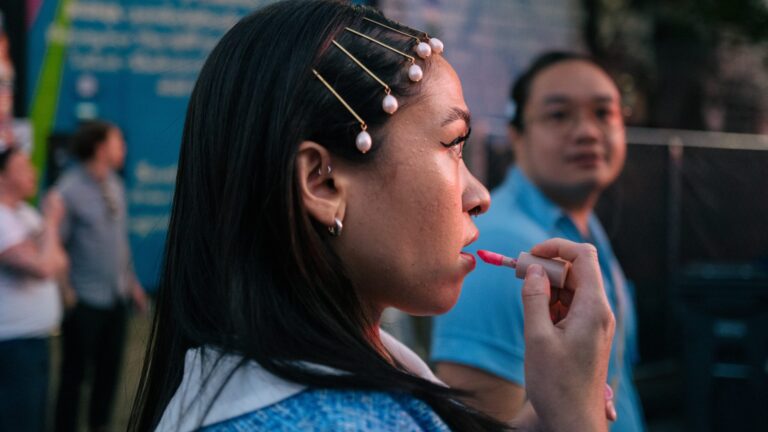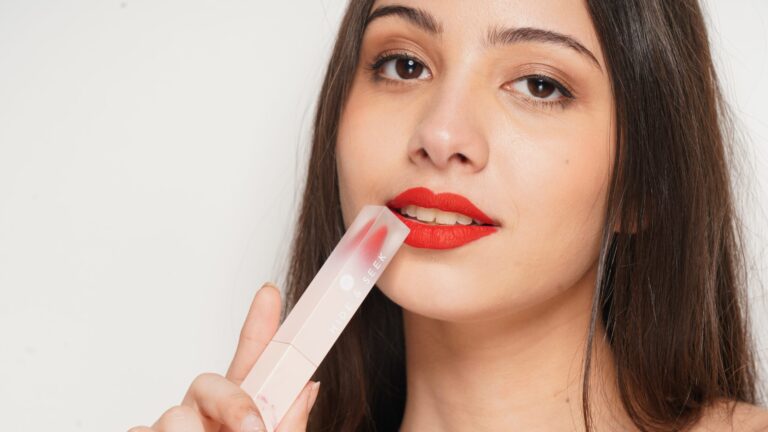Lip tints have become a popular beauty trend in recent years due to their long-lasting and natural-looking color. However, some people may experience blisters or irritation after using lip tints. If you’re wondering why your lip tint is causing blisters, this blog will explore some possible causes and solutions.
One of the most common reasons why a lip tint can cause blisters is an allergic reaction to one or more of the ingredients. Lip tints can contain a variety of ingredients such as dyes, fragrances, and preservatives, which can cause skin irritation or allergic reactions. If you experience blisters or itching after using a lip tint, check the label for any known allergens, and stop using the product immediately.
Use of expired or contaminated products:

Blisters or discomfort can also result from using lip tints that are out of date or contaminated. Lip stains may become infected with bacteria or mold over time, which may cause an illness or an allergic reaction. To avoid contamination, make sure to check the expiration date on your lip color and avoid sharing it with others.
Overuse or Over-application:
Blisters or discomfort can also result from wearing lip tint too frequently or in excess amounts. Since lip tints are made to last a long time, using them frequently or in layers can dry out the lips and cause them to split, which can result in blisters. To avoid dryness and irritation, be sure to frequently moisturize your lips and apply a light layer of lip tint.
Reaction to Sun Exposure:
Blisters or inflammation on the lips can also result from sun exposure, especially if you’re wearing lip products with retinol or other photosensitive components. These components might make you more sensitive to the sun and make you itch or blister. When spending time outside, use lip balm with SPF or refrain from using lip colors to prevent this.
Underlying Health Issues:

Blisters or discomfort brought on by lip tints may occasionally be signs of an underlying medical condition, such as herpes or fungal infection. Consult a dermatologist or other healthcare professional if you have persistent blisters or itching to rule out any underlying medical concerns.
Apparently, dermnetnz Lip plumping cosmetics hydrate or vasodilate the lips to give them the appearance of having more volume. Vasodilation can be brought on by one of three techniques:
- Interaction that is not immunological The most prevalent immediate contact reaction is urticaria, which is brought on by cayenne and cinnamon’s effects on prostaglandin metabolism. Clinically, it may resemble irritating contact cheilitis.
- The most frequent response to spices like cinnamon and cayenne pepper, which act on receptors to release substance P, is irritant contact cheilitis.
- Direct vasodilation action of L-arginine and benzyl nicotinate.
Patch Test Before Use:
Before using a new lip tint, it is always a good idea to conduct a patch test to prevent an allergic response or irritation. Apply a tiny amount of the product behind your ear or on the inside of your wrist, then wait 24 to 48 hours to check for any swelling, itching, or redness.
Choose High-Quality Products:
Purchasing premium lip stains with all-natural components will help lower the possibility of irritation or allergic reactions. Look for lip stains that are manufactured with healthy components like shea butter, vitamin E, and plant-based oils that are free from harsh chemicals and odors.
Moisturize Regularly:
Maintaining lip moisture is crucial because dry, cracked lips are more prone to discomfort and blistering. Before applying your lip tint, moisturize your lips with a lip balm or other product, and reapply as necessary throughout the day to maintain them moisturized and healthy.
Avoid Sharing Lip Tints:
Lip stains that have been shared or used past their expiration date run the danger of becoming contaminated and becoming the source of an infection or an allergic response. Never share lip color with others, especially if they have cold sores or other lip problems. Always use your own lip color.

To summarize...
There are several reasons why lip tints can result in blisters, such as an allergic reaction to the contents, the use of tainted or expired products, excessive use or application, a reaction to sunlight, or underlying health conditions. You may enjoy the long-lasting color and natural-looking finish of lip tints without any discomfort or side effects by determining the source and taking precautions to prevent irritation.
Does Red Lip Gloss Go With Brown Eyeshadow read more.
You can also try some clear lip glosses if your skin feels irritated by lip tints, here is the Top 10 Clear Lip Gloss.

